– new voting system in Jinan Foreign Language School
written by ZHU SIYU

Abstract
Voting is one of the most direct ways that people use to express their preference, and it has long been used to show fairness and democracy. In the past, scholars have invented countless voting system, like first-past-the-post, two-round, and single transferable vote. However, none of these systems proves to be effective in every setting. In other words, we need to use a suitable voting system in certain scenes to ensure fairness. Intrigued by this notion, this research was conducted to test the effectiveness of different systems in Jinan Foreign Language School as well as study voting behaviors of the students by using questionnaire and SPSS. After analyzing the result, a new voting system was suggested, which combines four different voting systems(first-past-the-post, two-round, instant-runoff, Borda count) and satisfaction rate to get the result.

Introduction
Voting is probably the most widespread and direct ways to collect people’s opinions. Various voting systems have emerged in human history, and each of them proves to be effective for certain settings. One of the most popular ones is first-past-the-post system, in which voters cast a vote for a single candidate, and the candidate with the most votes wins the election. It is one of the simplest and most direct voting. However, the possibility of leading to dissatisfaction of the majority, its vulnerability to gerrymandering, and the high number of wasted votes have made many countries abandon this method (The road to MMP, n.d.).
Another widely used system is two-round system. Voters will vote for one candidate in the first round. If the person who receive the most votes get more than 50% of total votes, he/she will win. Otherwise, the top 2 people will enter the second round for a first-past-the-post vote, and all others will be excluded. This allows voters to make a fresh choice in the second round, and it encourages diverse interests to coalesce behind the successful candidates from the first round in the lead-up to the second round of voting, thus encouraging bargains and trade-offs between parties and candidates. The huge additional cost and additional burdens are critical drawbacks for this system (Two-round system, n.d.) (Electoral Systems, n.d.).
Instant-runoff voting proves to be useful in some scenarios. IRV is the one-winner form of the single transferable vote. Voters in IRV elections rank the candidates in order of preference. Ballots are initially counted to establish the number of votes for each candidate. If a candidate has more than half of the first-choice votes, that candidate wins. If not, then the candidate with the fewest votes is eliminated, and the voters who selected that candidate as their first choice have their votes added to the total of the candidate who was their next choice. That process continues until one candidate has more than half of the votes, and that person is declared the winner. Instant-runoff voting has notably high resistance to tactical voting but less to strategic nomination. Compared to a plurality voting system that rewards only the top vote-getter, instant-runoff voting mitigates the problem of wasted votes. However, it does not eliminate this problem, or ensure the election of a Condorcet winner, which is the candidate who would win a direct election against any other candidate in the race. Thus, IRV usually gets a result that will not infuriate most people, but it is also not most people’s favorite choice (Toward Applicable Social Choice Theory, 1978). The Borda count gives points to the candidates according to their rankings. In the original variant, the lowest-ranked candidate gets 0 points, the next-lowest gets 1 point, etc., and the highest-ranked candidate gets n – 1 points, where n is the number of candidates. Once all votes have been counted, the option or candidate with the most points is the winner. A candidate that is everyone ’s third choice can beat someone who the majority put in first place. As such the system can elect broadly acceptable candidates over the preferences of the majority. However, Borda count is open to tactical voting and encourages voters to not complete their ballot in their true preferential order. Thus, some people argue that a system encouraging cheating should not be considered as a fair system.
Since each system has pros and cons, it is hard to examine the most suitable voting system in school just by referring to the theory. To what extent are students satisfied or dissatisfied with the result obtained by first-past-the-post voting? If instant-runoff is employed, will students accept a choice that is neither their favorite nor their least favorite? Will the tactical voting problem in Borda count affect the result? To answer these questions, a questionnaire was designed to further test each system under different contexts.
Method
To further study the best voting method in school, a questionnaire was designed to analyze the result difference of various voting systems as well as students’ voting behaviors. The setting of the questionnaire is a canteen, since the issues in the canteen have long been a complaint by students, which can encourage them to finish the questionnaire. The questionnaire contains 10 multiple-choice questions, and it also asked students’ gender and grade information in order to analyze the social demographic features of students. Students were asked to rank four choices, then choose their satisfaction rate for each answer (range from 1 very unsatisfied to 5 very satisfied). Then, three different systems (first-past-the-post, Borda count, instant-runoff) will be used to process the data and generate results, since these three systems are the most widely used and representative systems for one answer.
The sample group for the questionnaire are students from Jinan Foreign Language School International Center, which has enrolled about 540 students in total. Thus, results may show preference over certain choices, and this preference will be further explained in the result section. Plus, several characteristics for high school students can also affect the test. For example, high school students will begin to be conscious about the impact for certain action, leading to tactical voting (EL education, n.d.) . The increasing appetite during adolescence could be another factor that influence the test (Johns Hopkins Medicine, n.d.) . The questionnaire is sent online and convenience sampling is used.
After collecting the vote, SPSS is used to explore the gender difference and grade difference. Independent-sample T test is used for gender difference, and One-way ANOVA and LSD test are used to show grade difference.
Result
39 of grade 12 students finished the questionnaire, whereas 81 of grade 11 students and 86 of grade 10 students completed the questionnaire.
As for the gender difference, 128 of female students and 78 male students finished the questionnaire. The difference can be explained by the disproportion of female and male students in the school, since around 70% percent of students in the school are female.
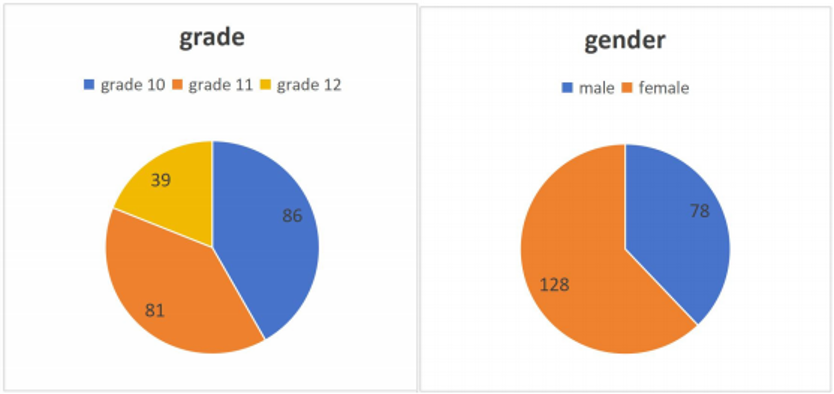
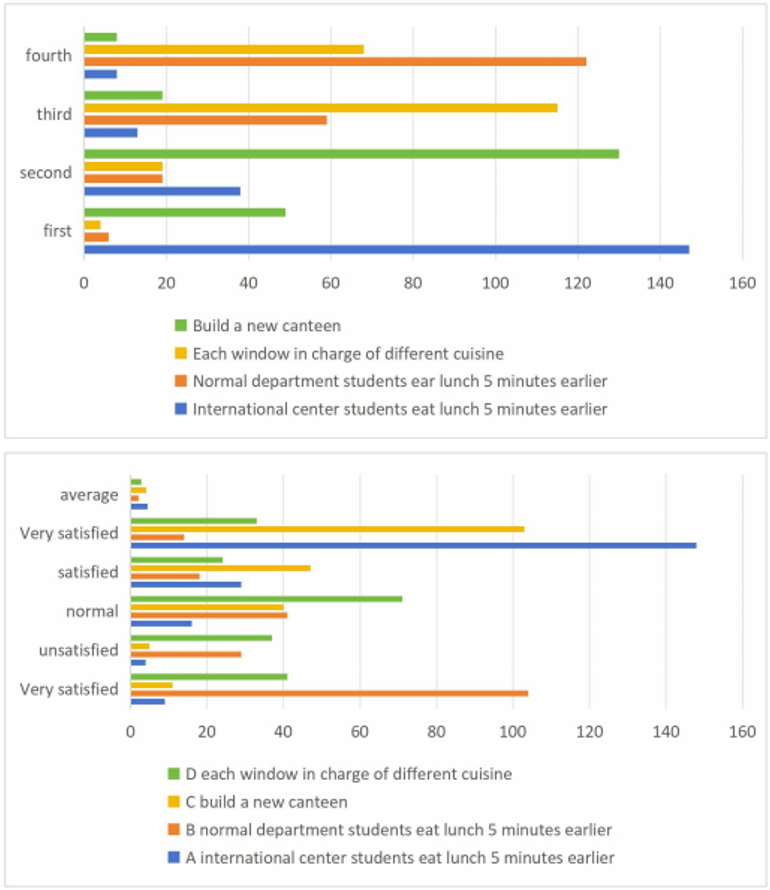
If the-first-past-the-post system is employed, A with 147 vote out of 206 will be the result.
According to instant-runoff vote, 147 is more than half of 206, so A will also win. In Borda count system, A with score 530(147*3+38*2+13) is the highest. In this sense, A should be the final result for this scenario without a doubt. The preference is formed due to the sample group. All of the students that finished the questionnaire are from the international center, so it is reasonable for them to prefer the choice that is beneficial for them. If I change the sample group to the normal department students, the result will probably be different.
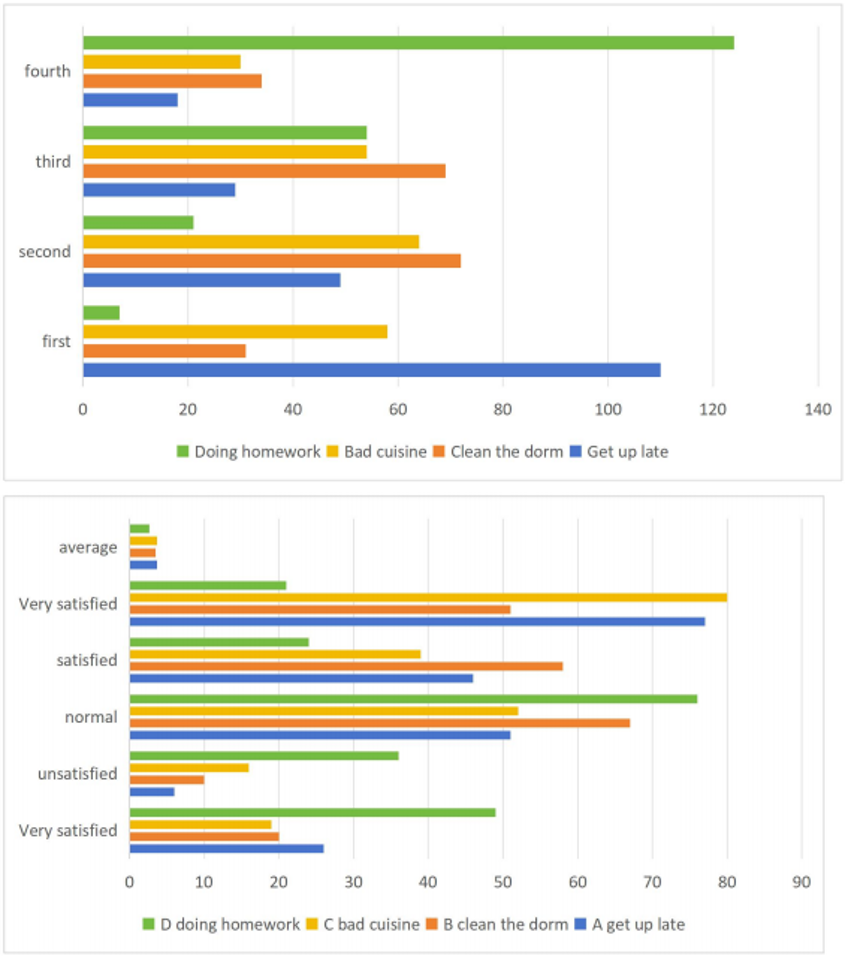
Choice A, with 110 votes, wins in first-past-the-post system, since 110 is over half of the total vote. Score of A in Borda count is 457(110*3+49*2+29), which is also the highest. However, this is the first time the satisfaction rate and voting get different answers. Choice A is guaranteed by all of the three systems, but choice C receives the highest satisfaction rate. This phenomenon might show the contradictory mind of the voters. The main reason for not eating breakfast is probably getting up late. However, they do not want this choice to be the final result for this question, which might mean they do not want the school to conduct any action based on the result, like
forcing them to leave the dorm earlier. Instead, they think it is better for C to be the final result, which probably shows that they want to improve the cuisine by using this choice as the result. In addition, this result implies that the choice that gets the highest vote is not always the most satisfied answer.
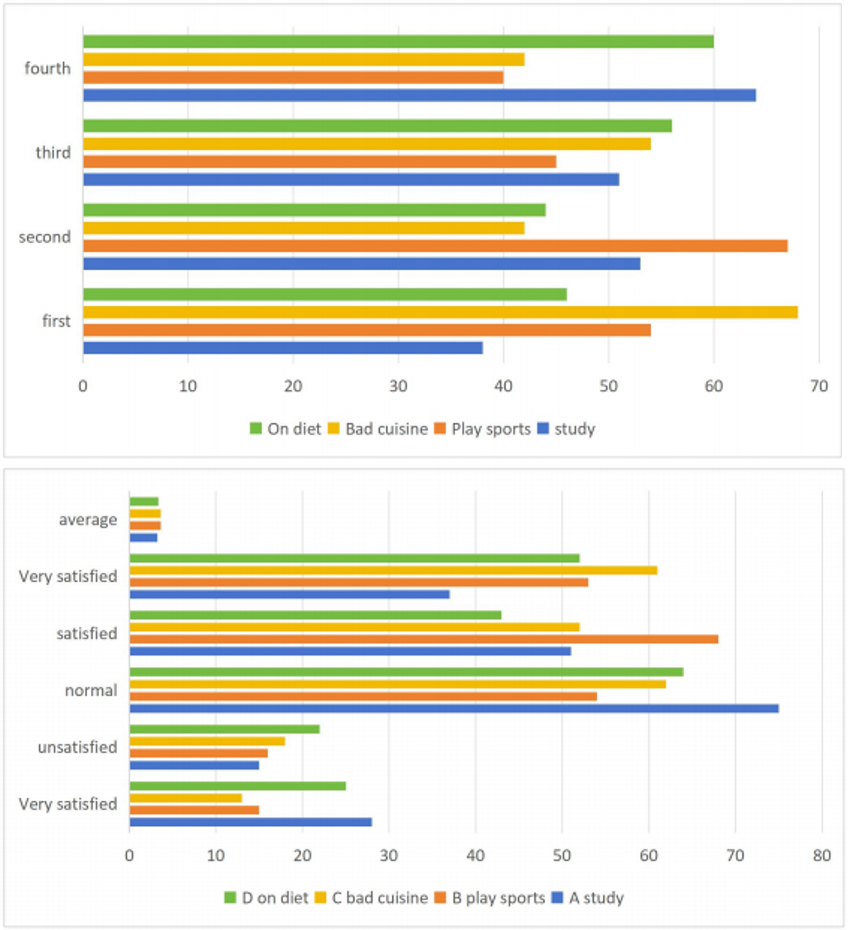
In first-past-the-post system, choice C with the highest vote of 68 wins. In the instant-runoff vote, after eliminating choice A and redistributing the vote, A will get the highest vote of 98. If Borda count is used, C will get 342(68*3+42*2+54), which is only sightly higher than the second highest score of B(54*3+67*2+45=341). Plus, if we look at the satisfaction rate, C is also only slightly higher than B. In this sense, a small change greatly impacts the result of the satisfaction rate and Borda count. Thus, using only one voting system in school has great potential to guarantee a not suitable answer.
By using SPSS to do One-way ANOVA test for variable “grade” and the other choice, the result shows the voting behavior difference of each grade in detail.

By using the One-way ANOVA test, only four choices show significant difference. Nevertheless, if we take a closer look using LSD, the difference is more obvious.
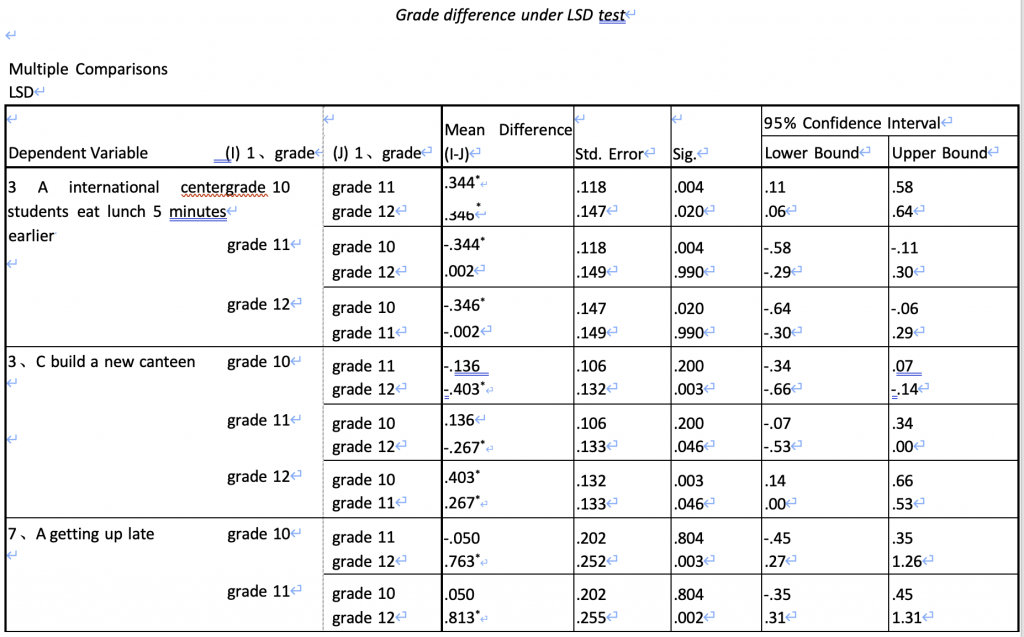
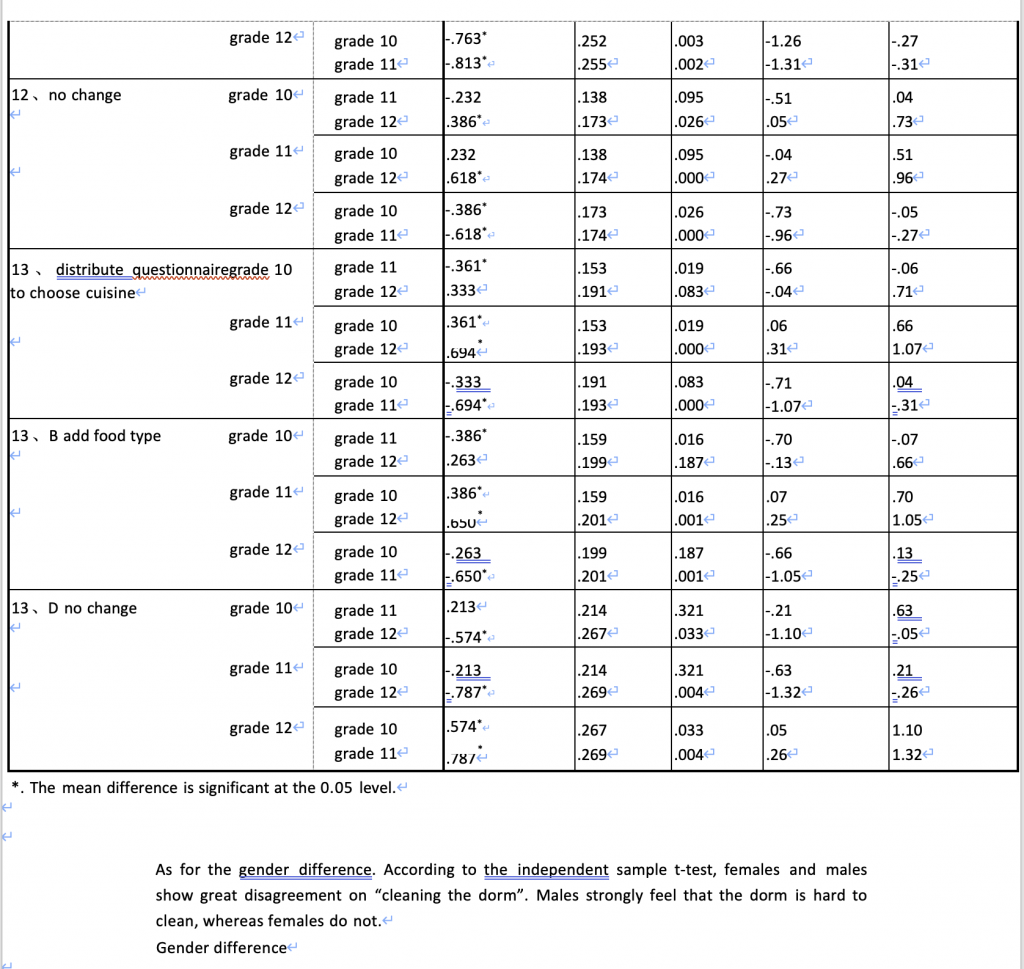

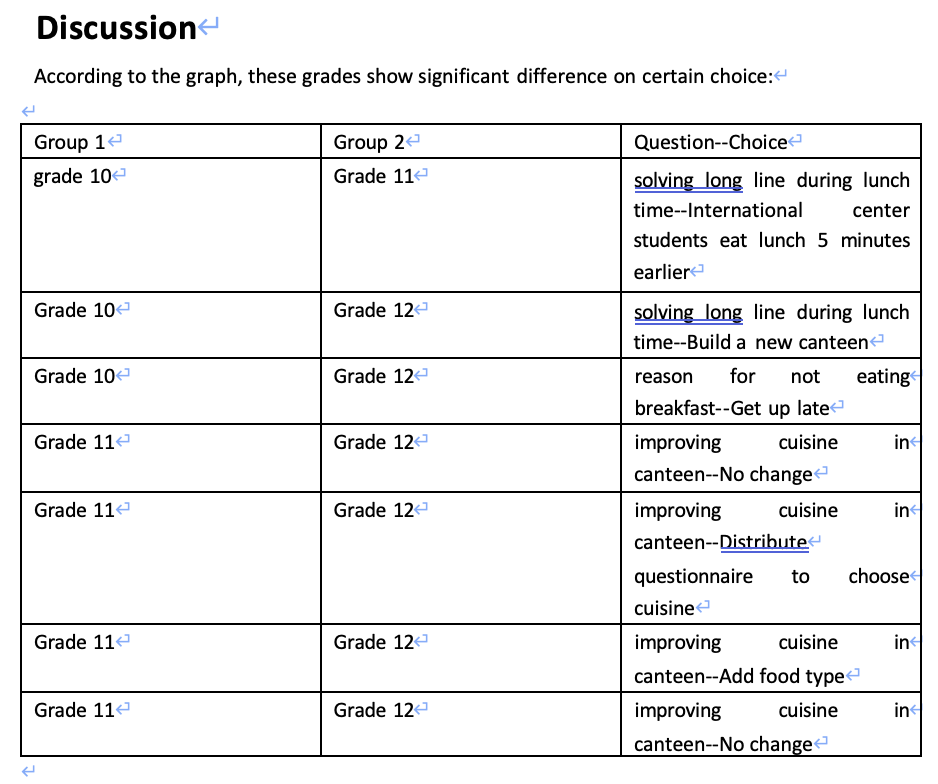
A conclusion can be achieved through the data: boys tend to believe sanitary problems in dorm are troublesome, whereas girls do not think so. Grade 10 tend to vote for a choice that is more transformational, rather than a choice that slightly improves the current situation. Their responses reflect that they are no very used to school rules since it is their first year in high school (In China, high school only contains grade 10, grade 11, and grade 12). They are full of energy and always get up earlier. They are excited about school life and everything is new to them (Karnish, 2023) . Grade 11 focuses more on the improvement of the rules, whereas grade 12 prefer better cuisine. This is because grade 11 are in a planning stage. They need to plan for college application, activity, and future career. Thus, they tend to think more rationally about practical solutions over existing rules (Yale University, 2009) . In contrast, grade 12 do not really pay attention to the improvement of regulation, since it is a long-term thing. They are about to leave the school, so they only focus on short-term things that can affect rest of their time in school, just like cuisine (Karnish, 2023).
Limitation
Due to the convenience sampling, the samples for this questionnaire are international center students from Jinan Foreign Language school, so the result might be biased. Plus, the sample size is only 206, so the result cannot generalize a large population.
Implication
After using various systems to process the data from the questionnaire, the drawback of using only one voting system can be seen. Although these systems guarantee the same answer when the difference between the first and the second place is dramatic, they tend to generate different results when the vote obtained by each choice is similar. This tendency can be clearly seen in the last two questions, where the final result is only slightly higher than the second place in Borda count and satisfaction rate. The possible disagreement for the results of different voting systems can lead to bigger problems in the school’s decision. Thus, it is not appropriate to use only one system in the school setting. Each system has its drawback, like the possibility of leading to dissatisfaction of the majority in first-past-the-post system, the failure to ensure Condorcet winner in instant-runoff vote, and the vulnerability to tactical vote in Borda count. It is better to use a system that can avoid the drawbacks of these systems to some extent and get a satisfactory result at the same time.

In this sense, a new voting system is suggested. First, Borda count, instant-runoff, and first-past-the-post are used to process the data. If more than two systems get the same option, that option will enter the second round. In addition, the option with the highest satisfaction rate will also go to the second round. If the option with the highest satisfaction rate is the same as the option guaranteed by more than two systems, that option will directly win. Otherwise, people will vote another round for these two options.
The result of the questionnaire also serves as a suggestion for the school. It is hard for the school to adjust the canteen policy based on different grades’ different preferences, but improving the cuisine is definitely a good action for the canteen to take. No one will refuse some more delicious food. Considering the gender difference, it is important for the school to teach males more techniques to clean the dorm. In addition, changing the standard for female and male’s dorm is also a good idea. Since cleaning the dorm will affect males more when it comes to breakfast, the school should make the policy more flexible and lower the dorm’s sanitation standard to some extent. Women suffer more than men when there is a lack of appropriate sanitation facilities, so women tend to keep their dorms cleaner (Integrating a gender perspective in sustainable sanitation, 2012) . Thus, the current sanitation standard for school is too high, since it only fits women’s dorms. In school setting, especially when making policy, it is essential to consider these different preferences and change them into suitable policy.
Conclusion
Using the data collected by convenience sampling, first-past-the-post, instant-runoff, and Borda count are tested in a school setting. Although these systems guarantee the same answer when the difference between the first and the second place is dramatic, they have the potential to generate different results when the vote obtained by each choice is similar. Thus, a new voting system is suggested, which combines first-past-the-post, borda count, instant-runoff and satisfaction rate to determine the final result.
Reference
(n.d.). Retrieved from Electoral Systems: https://aceproject.org/main/english/es/esd04b.htm
(n.d.). Retrieved from Johns Hopkins Medicine: https://www.hopkinsmedicine.org/health/wellness-and-prevention/healthy-eating-durin
g-adolescence (1978). In M.D.J.R. Chamberlin, Toward Applicable Social Choice Theory. Retrieved from https://eleducation.org/resources/characteristics-of-high-school-learners
Integrating a gender perspective in sustainable sanitation. (2012, April). Retrieved from Sustainable Sanitation Alliance: https://www.susana.org/_resources/documents/default/2-1187-8–wg07b20en-factshee t-wg07-gender-sanitation-2011-final2012-03-15-tmsx.pdf
Karnish, S. (2023, March 16). Freshman vs. Senior Year of High School: The Biggest Differences. Retrieved from
https://www.collegexpress.com/articles-and-advice/student-life/articles/living-campus/f reshman-vs-senior-year-high-school-biggest-differences/
The road to MMP. (n.d.). Retrieved from Ministry for Culture and Heritage: https://nzhistory.govt.nz/politics/fpp-to-mmp/first-past-the-post
Two-round system.(n.d.). Retrieved from The Electoral Reform Society: https://www.electoral-reform.org.uk/voting-systems/types-of-voting-system/two-round- system/
Yale University. (2009). “Sophomore Year: Get Involved “. A year by year guide.
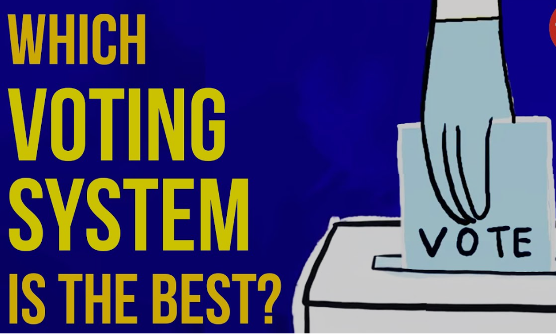
Leave a Reply
You must be logged in to post a comment.